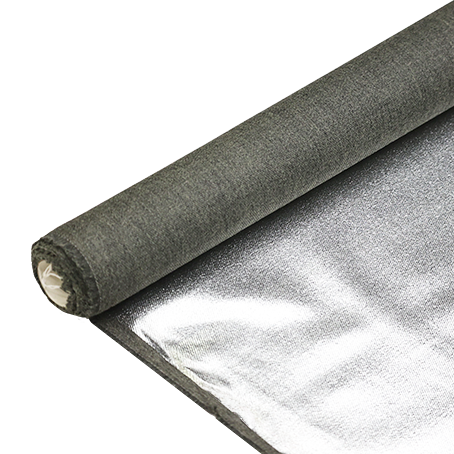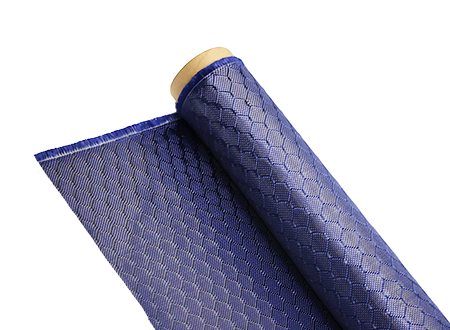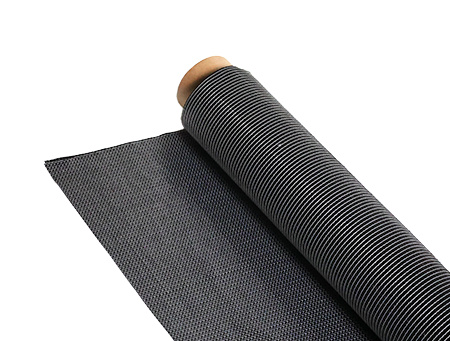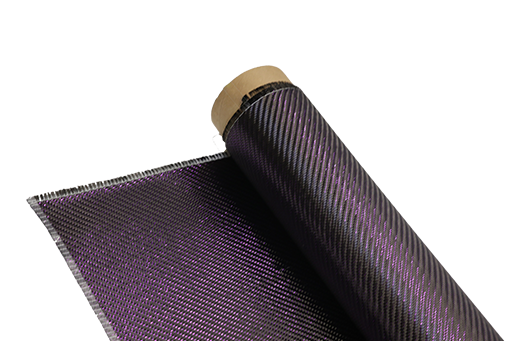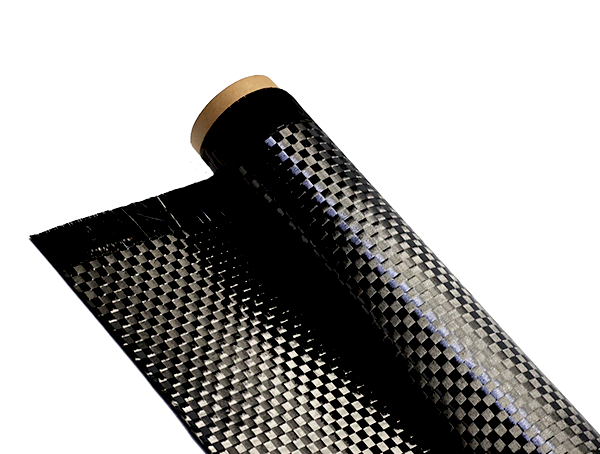Применение углеродного волокна в скоростных катерах
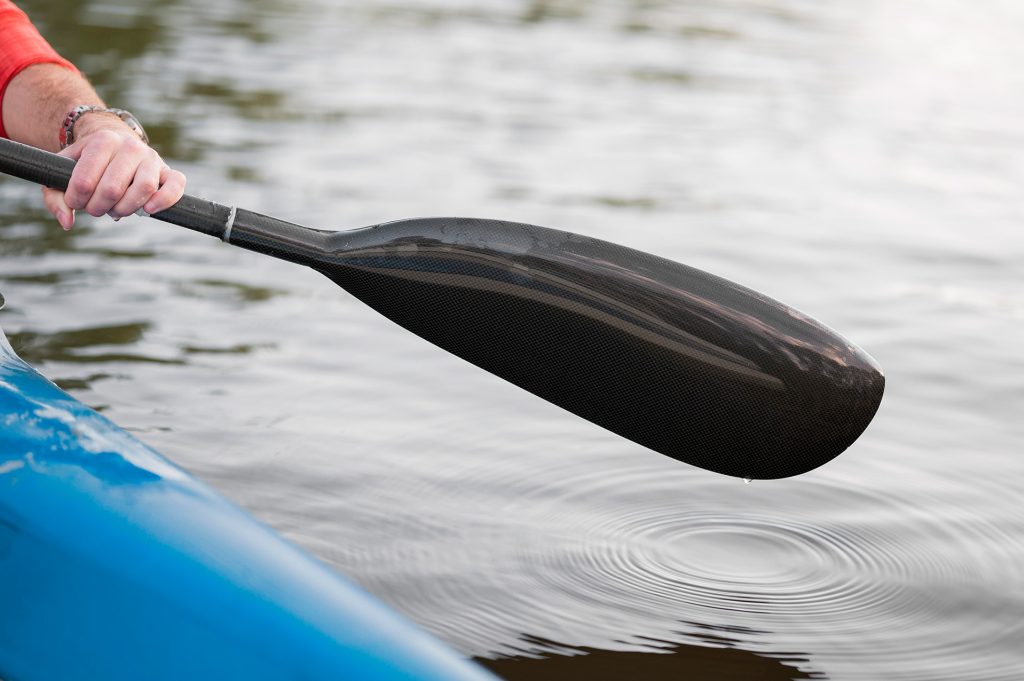
Carbon fiber is a unique material that is lightweight yet incredibly strong and durable, making it highly sought-after in the construction of speedboats. Its strength is attributed to the carbon atoms that are tightly bonded to form long, thin fibers that are then woven together to form a fabric-like material. This process results in a material that is significantly stronger than steel but much lighter.
The properties of carbon fiber are what make it an ideal material for speedboat construction. Its high strength-to-weight ratio results in speedboats that are faster and more agile. It also contributes to improved fuel efficiency since the boat's weight is reduced, requiring less fuel to power it. Carbon fiber's unique properties also allow for customized designs that optimize performance and speed.
The manufacturing process of carbon fiber involves several steps, including carbonization, which involves heating the fibers to high temperatures to eliminate all non-carbon elements. The resulting fibers are then woven together into a fabric that can be shaped and molded to form the desired shape and size. The specific type of композиты из углеродного волокна used in speedboat construction depends on the boat's design and intended use.
In summary, carbon fiber is a lightweight powerhouse that has revolutionized the speedboat industry. Its unique properties make it an ideal material for speedboat construction, enhancing performance, agility, and speed while reducing fuel consumption. Understanding the properties and applications of carbon fiber is crucial for anyone looking to explore the world of high-speed boating.
Advantages of carbon fiber in speedboat design
Carbon fiber is fast emerging as the go-to material for speedboat design, thanks to its unique properties. Here are some advantages of using carbon fiber in speedboat construction:
| Преимущества | Объяснение |
|---|---|
| Улучшенная производительность | Материалы из углеродного волокна are incredibly lightweight, giving speedboats a better power-to-weight ratio. This translates to improved acceleration, agility, and speed, making the boat more exciting to operate. |
| Улучшенная топливная экономичность | Due to its lightweight nature, carbon fiber reduces the overall weight of the boat. This leads to better fuel economy and less wear and tear on the engine. |
| Customizable designs | Композиты из углеродного волокна can be molded into any shape, allowing for unique and personalized speedboat designs. This offers greater design freedom to create a boat that stands out from the crowd. |
| Better maneuverability | Carbon fiber's lightweight construction enhances the boat's maneuverability, resulting in better handling and control. This is particularly useful in challenging waters where quick responses are necessary. |
Overall, carbon fiber offers a range of benefits when it comes to speedboat design, making it a popular choice for many boat manufacturers and owners.
Carbon fiber hulls: Strength and durability
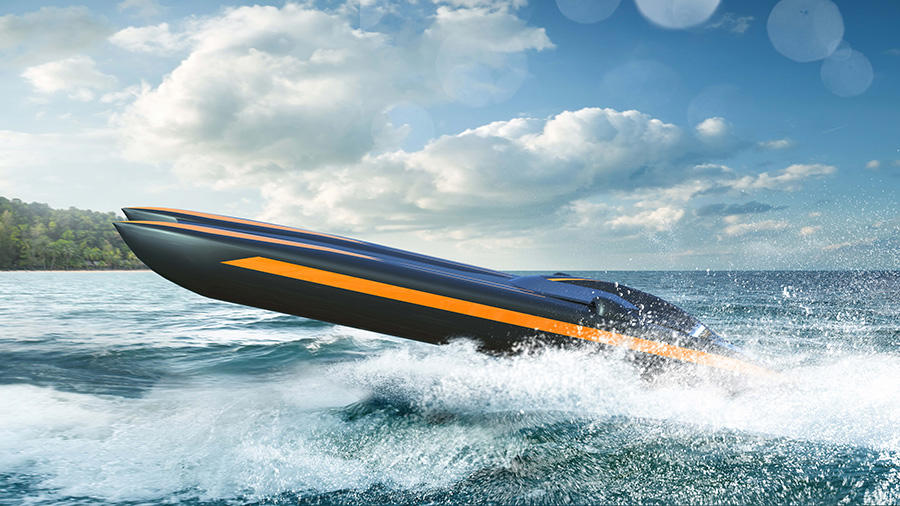
Carbon fiber is an incredibly strong and durable material that offers better resistance to impact and fatigue compared to traditional materials. When used in hull construction, it can provide speedboats with exceptional strength and stability.
Композиты из углеродного волокна are not only strong but also incredibly flexible. This flexibility allows for customized hull designs that optimize the performance of the boat. The material's unique properties make it an ideal choice for building speedboats that can withstand harsh marine conditions and tackle challenging waterways.
| Benefits of carbon fiber hulls | Traditional materials |
|---|---|
| Lighter weight, leading to improved maneuverability and speed | Heavier weight, leading to reduced maneuverability and slower speeds |
| Better resistance to impact and fatigue | More susceptible to damage and wear and tear |
| Longer lifespan, requiring less frequent repairs and maintenance | Shorter lifespan, requiring more frequent repairs and maintenance |
The use of carbon fiber in hull construction has revolutionized the speedboat industry, providing boat designers with unparalleled creativity and innovation. The material's flexibility allows for unique hull shapes and designs that optimize performance and speed, giving speedboat enthusiasts an unforgettable experience on the water.
"Carbon fiber hulls provide superior performance, durability, and aesthetics, ensuring that speedboat enthusiasts can enjoy their boats for years to come."
Carbon Fiber in Speedboat Interiors: Comfort and Aesthetics

Carbon fiber not only enhances the performance of speedboats, but it also adds a touch of luxury to their interiors. The material is increasingly being used to create high-end finishes, providing speedboats with a sleek and modern feel.
One of the significant advantages of carbon fiber is its versatility in customization. Boat owners can personalize their interiors to match their preferences, creating a unique and comfortable space. Carbon fiber dashboards, consoles, and trim pieces elevate the overall aesthetic of the cabin, giving it a luxurious appearance.
The lightweight and durable nature of carbon fiber also allows designers to create more functional and ergonomic interiors. Comfortable seats with built-in storage options, for instance, can be crafted using carbon fiber materials, providing both a practical solution and improved aesthetics.
"Carbon fiber is revolutionizing the high-end boat industry, providing us with endless design possibilities" - John Smith, interior designer at Deep Blue Yachts.
Moreover, the material's resistance to corrosion and easy maintenance make it an excellent choice for marine applications. Carbon fiber parts require little upkeep, making them an ideal material for speedboat owners looking for a low-maintenance option.
Overall, the use of carbon fiber in speedboat interiors enhances both the comfort and the aesthetics of the boat, providing a luxurious and functional space for passengers to enjoy.
Carbon fiber in propulsion systems: Boosting Speed and Efficiency
Carbon fiber's lightweight and durable nature has made it a popular choice for propulsion systems in speedboats. The use of carbon fiber components, such as propellers and shafts, has led to improved performance, agility, and speed, while also increasing fuel efficiency.
Технология углеродного волокна has also enabled the reduction of vibrations and noise in propulsion systems, providing a smoother and more enjoyable ride for passengers. Additionally, carbon fiber composites offer high flexibility, allowing for customized designs that optimize the performance of the boat.
| Component | Преимущества углеродного волокна |
|---|---|
| Propellers | Lightweight, durable, and efficient design, improving overall boat performance |
| Shafts | Improved power transfer and reduced drag, enhancing speed and fuel efficiency |
| Engine mounts | Reduces engine vibration and noise, improving boating experience |
The use of carbon fiber in propulsion systems has become increasingly prevalent in the speedboat industry, paving the way for enhanced speed and efficiency. As technology continues to advance, further improvements and innovations in carbon fiber are expected, driving the industry towards a more sustainable and performance-driven future.
Carbon fiber in structural reinforcements: Stability and safety
Carbon fiber composites are widely used in structural reinforcements of speedboats, offering several advantages over traditional materials like steel or aluminum. Carbon fiber reinforcements are stronger, more durable, and exhibit excellent resistance to impact and fatigue. This significantly improves the stability and safety of speedboats, reducing the risk of structural failures that can cause accidents or injuries.
One significant advantage of carbon fiber reinforcements is its flexibility, enabling manufacturers to design custom-fitted reinforcements that align with the unique shape and structure of the boat. This allows for better weight distribution, further improving the stability and maneuverability of the speedboat.
In addition to performance benefits, carbon fiber reinforcements also reduce maintenance requirements, lowering the overall cost of ownership. Since carbon fiber composites are highly resistant to corrosion and other forms of wear and tear, these reinforcements can last much longer than traditional materials, leading to significant cost savings in the long run.
| Advantages of carbon fiber in structural reinforcements: | Disadvantages of traditional materials: |
|---|---|
| Greater strength and durability | Higher risk of corrosion and wear and tear |
| Excellent resistance to impact and fatigue | Structural failures due to metal fatigue |
| Customizable design for better weight distribution | Less flexibility, leading to weight imbalances |
| Low maintenance requirements, reducing costs | Higher maintenance requirements and costs |
Overall, the use of carbon fiber composites in structural reinforcements of speedboats has transformed the industry, driving progress in stability and safety while also reducing cost and maintenance burdens. As технология углеродного волокна continues to advance and improve, we can expect even more impressive benefits for speedboat design and performance in the future.
Carbon fiber and the future of speedboat design
The future of speedboat design lies with carbon fiber. Advanced технология углеродного волокна is transforming the industry, providing lightweight yet strong materials that improve speed, agility, and fuel efficiency. It is the material of choice for many designers and boat manufacturers, enabling greater customization options and pushing the boundaries of what is possible.
The промышленность углеродного волокна has been steadily growing, with a projected value of $3.7 billion by 2025. As demand for Изделия из углеродного волокна continues to rise, so does the need for innovative manufacturing techniques that streamline production and improve quality.
One such innovation is automated fiber placement (AFP), a cutting-edge manufacturing process that utilizes robotic technology to lay down carbon fiber reinforcements with precision and accuracy. This dramatically reduces production time and improves the consistency and quality of the final product.
The Benefits of Carbon Fiber
Carbon fiber's unique properties make it an ideal material for speedboat design. Its lightweight yet strong nature improves performance, allowing boats to move faster and more efficiently. This translates into improved fuel economy, reduced emissions, and lower operating costs.
Coupled with carbon fiber's ability to withstand impact and fatigue, speedboats crafted from this material offer exceptional safety and durability, reducing maintenance requirements and extending the lifespan of the boat.
The Future of Speedboat Design
In the years to come, we can expect to see even more exciting developments in the world of carbon fiber speedboats. From new manufacturing techniques to advanced design concepts, the possibilities are endless.
The emergence of hybrid and electric propulsion systems is also driving innovation in the speedboat industry, as boat manufacturers seek to leverage the benefits of carbon fiber to optimize performance and sustainability.
The Role of Sustainability
As the промышленность углеродного волокна continues to expand, there is a growing concern for sustainability. Boat manufacturers are exploring ways to reduce the environmental impact of carbon fiber production and disposal, including recycling initiatives and the use of bio-based materials.
By prioritizing sustainability and responsible manufacturing practices, the industry can continue to grow and innovate while minimizing its impact on the environment.
"Carbon fiber technology is truly a game-changer for the speedboat industry. With its strength, durability, and lightweight properties, the possibilities for design and performance are endless. It's an exciting time to be in this industry."
Environmental considerations of carbon fiber in speedboats
While carbon fiber is an excellent material for speedboat construction, its manufacturing process raises some sustainability concerns. The production of carbon fiber involves high energy consumption and generates significant greenhouse gas emissions, which can have detrimental effects on the environment. Consequently, there is a growing need for responsible manufacturing practices and sustainable disposal methods in the carbon fiber industry.
Despite these challenges, the industry has taken several initiatives to mitigate its environmental impact. Many manufacturers have implemented recycling programs for carbon fiber waste, which can be used to create new products. In addition, researchers are continually exploring new methods, such as electrospinning, which can produce carbon fiber without the use of solvents or binders, reducing its ecological footprint.
Moreover, the development of bio-based carbon fibers sourced from renewable materials like plant fibers is gaining attention as a more sustainable option. Such fibers can significantly reduce the carbon footprint, as they require less energy for production and generate fewer greenhouse gas emissions.
Overall, the carbon fiber industry must strive towards promoting sustainable manufacturing processes to minimize its environmental impact and encourage the development of environmentally friendly alternatives to conventional carbon fiber materials.
Заключение
In conclusion, the application of carbon fiber in speedboat design has revolutionized the industry, providing a lightweight yet durable material that enhances performance and efficiency. From hull construction to propulsion systems and interior design, carbon fiber offers unparalleled advantages that drive innovation and advancements in speedboat technology.
As the market demand for carbon fiber-based speedboats continues to grow, so does the potential for further improvements in design, performance, and sustainability. The ongoing developments in carbon fiber technology and manufacturing offer promising opportunities for the speedboat industry to deliver exceptional products that meet the evolving needs of speedboat enthusiasts.
However, it is important to consider the environmental impact of carbon fiber production and use in speedboats. Responsible manufacturing and disposal practices are necessary to ensure minimal environmental footprint and promote sustainability within the carbon fiber industry.
Overall, carbon fiber is a game-changer in speedboat design, and its transformative impact will continue to shape the industry in the years to come.
Часто задаваемые вопросы
What are the benefits of using carbon fiber in speedboats?
Carbon fiber offers several benefits in speedboat construction, such as its lightweight yet strong nature, which enhances performance and fuel efficiency. It also provides better maneuverability and durability compared to traditional materials.
Как производится углеродное волокно?
Carbon fiber is manufactured through a process called carbonization, where precursors are heated to high temperatures to create carbon filaments. These filaments are then combined and woven into sheets before being impregnated with resin and cured to form carbon fiber composites.
What types of carbon fiber composites are available for speedboat construction?
There are various types of carbon fiber composites used in speedboat construction, including uni-directional carbon fiber, woven carbon fiber, and hybrid carbon fiber composites. These composites offer different characteristics and strengths depending on the specific application.
How does carbon fiber enhance the performance of speedboats?
Carbon fiber improves speedboat performance by reducing overall weight, increasing strength, and enhancing maneuverability. It allows for the construction of sleek hull designs that reduce drag and improve speed, while also increasing fuel efficiency.
Can carbon fiber be used in speedboat interiors?
Yes, carbon fiber can be used in speedboat interiors to enhance comfort and aesthetics. It is often used for cabin panels, seating, and trim, providing a luxurious and modern look. Carbon fiber interiors can be customized to suit the owner's preferences.
How does carbon fiber technology contribute to speedboat propulsion systems?
Carbon fiber components, such as propellers and shafts, improve the efficiency and power output of speedboat propulsion systems. Carbon fiber technology reduces vibrations and noise, resulting in a smoother and more enjoyable ride.
How does carbon fiber strengthen speedboat hulls?
Carbon fiber hulls offer exceptional strength and durability, providing better resistance to impact and fatigue compared to traditional materials. The flexibility of carbon fiber composites allows for customized hull designs that optimize performance and stability.
What is the future of carbon fiber in speedboat design?
The future of speedboat design is closely tied to carbon fiber advancements. Emerging technologies and innovations in the carbon fiber industry are driving improvements in speedboat construction, leading to enhanced performance, sustainability, and market demand.
What are the environmental considerations of carbon fiber in speedboats?
While carbon fiber offers numerous benefits, its production and disposal pose environmental challenges. Sustainable manufacturing practices and responsible disposal methods are being developed within the industry to minimize the environmental impact of carbon fiber in speedboats.
Is carbon fiber a widely used material in the speedboat industry?
Yes, carbon fiber is increasingly being utilized in the speedboat industry due to its exceptional properties. It is being adopted for various applications, including hull construction, interiors, propulsion systems, and structural reinforcements, as it offers significant performance improvements over traditional materials.

